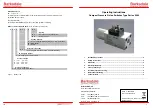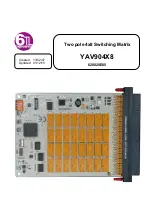
Commissioning
Real-time Ethernet port multiplier
37
Version: 2.6
4.2.2
Setting up: Device EtherCAT with cable redundancy
If a downlink port of the CU2508 has been set up as an EtherCAT device, a further port can be used as a 2
nd
EtherCAT port for the purpose of cable redundancy.
The "TwinCAT cable redundancy" supplement serves to keep the EtherCAT system in operation in the case
of an unforeseen interruption in communication due to cable breakage. The system is single-error tolerant.
This achieved by the ring closure of the EtherCAT system to the controller. If more than 1 error occurs,
slaves drop out of the communication. They are only readmitted after all connections have been restored.
Fig. 46: TwinCAT EtherCAT cable redundancy
Regarding this, refer to the principle explanations in the
.
The combination of the
EtherCAT cable redundancy
and
Distributed Clocks
technologies is possible using
the CU2508.
Notes on EtherCAT cable redundancy
• Only the downlink port combinations X1/2, X3/4, X5/6 and X7/8 are permissible for EtherCAT cable
redundancy.
• If EtherCAT cable redundancy is activated, the CU2508 ports used is automatically set as the
Distributed Clock ReferenceClock. The synchronization of the devices can thus be maintained even in
the case of media interruption.
• During EtherCAT startup with Distributed Clock devices, the cable-redundant ring must be closed, and
continuous communication must be possible, otherwise no synchronization is possible.
• An external Distributed Clocks synchronization of such an EtherCAT system is not possible for the time
being.
• The supplementary license "EtherCAT cable redundancy" is chargeable and is available for Windows
XP (NT, 7, WES) and CE (WEC).
It can be downloaded from the
download area
on the Beckhoff web page.
















































